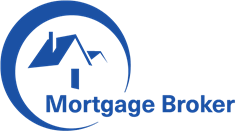Commercial Loans Explained

Commercial Loans Explained
In financial terms, a loan is a borrowing of funds by one or more people, companies, institutions or other financial entities to another person, companies, institutions etc. The borrower is typically liable only to repay the outstanding balance on the loan and is free to use the borrowed funds for any purpose until that debt is paid off and the original amount of the loan paid in full. Many different types of loans exist, including business loans, personal loans, debt consolidation loans, merchant cash advance loans, home equity loans, car loans, student loans and many more.
Small business loans are an example of a loan, where the business owner borrows money from a lender. However, small businesses usually need more capital than a sole proprietor or self-employed borrower because of their limited resources. Banks and other lending institutions have specific loan programs for small businesses, which can be availed depending on the loan amount, business experience, credit history, and other factors. For example, two-wheeler loans or motorcycles can be used to fund the purchase of more expensive vehicles or equipment, business expansion, and setting up a new branch. Business owners with less cash available can borrow small business loans from banks or financial institutions through financial institutions. These loans can be used for a wide range of purposes such as purchasing additional equipment, expanding the business location, paying off existing debts, and so on.
Commercial loan-related activities are carried out through various strategies. One of these strategies is called commercial mortgage. A commercial mortgage is a secured loan that is used to purchase land or real estate, which has to be used for a particular purpose. A commercial mortgage can be secured against real property or anything else, including vehicles or houses. In order to secure a loan, the lender requires two kinds of collateral: the first kind of collateral is personal property like a house or a car, while the second kind of collateral is personal assets like shares, bonds, accounts, and so on. If the borrower fails to meet the repayment deadline, the lender may repossess the collateral in order to refund the loan.
Another common strategy used by lenders is to obtain a nonrecourse loan. Nonrecourse loans enable the lender to borrow without worrying about losing any collateral if the borrower fails to meet the repayment on time. For example, if a customer fails to make payment on a credit card, the store can apply for a loan and request the credit card company to provide security for the loan. If the credit card company refuses to do so, the store can sell the unpaid credit card debt to another entity, which will be able to fulfill the obligations.
Commercial loans allow borrowers to choose the method of payment. If a borrower fails to meet the repayment deadline, the loan repayment term will be increased, which could push the total loan amount up to the maximum amount. Therefore, it is important for borrowers to carefully read the terms of a loan before signing on the dotted line. There are two types of nonrecourse loans: secured and unsecured, with secured loans being less expensive in most cases because the interest rates are lower.
Either way, the lender is in control of the use of the funds. Borrowers should therefore consider the implications of the loan carefully before deciding to take up a loan. Taking up a loan when the borrower does not have enough savings, or having the loan applied for with high interest rates, could prove costly in the long run. So borrowers must weigh the pros and cons of a loan before they sign on the dotted line.
